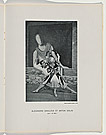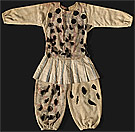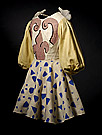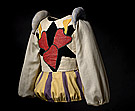Giorgio de CHIRICO

Giorgio de Chirico (b Volo, Greece, 10 July 1888 – d Rome 1978) studied art in Athens and then Florence before moving to Germany in 1906, where he attended the Academy of Fine Arts, Munich. Returning to Italy in 1909 he painted enigmatic works, with empty spaces, shadows and strange perspectives. From 1914 he began to use tailors’ dummies—painted, with plaster heads and rubber gloves—which foreshadowed much of his Surrealist imagery.
Conscripted into the Italian armed forces in 1915, de Chirico suffered a mental breakdown after being assigned to the military hospital in Ferrara. Here he met Futurist painter Carlo Carrà and together they founded the Scuola Metafisica. Following the group’s break-up around 1920, de Chirico began to take a serious interest in the Italian classical painting tradition. By 1925 he had moved to France and become part of the arisian Surrealist movement.
De Chirico designed for many ballets during his career. He provided designs for the Ballets Suédois’s La Jarre (The jar) in 1924, before designing costumes and sets for Diaghilev’s Ballets Russes 1929 production of Le Bal. Between the end of Diaghilev’s Ballets Russes and the redevelopment of the company under de Basil, de Chirico worked for the Paris Opera. De Basil commissioned him to provide costumes for Pulcinella (1931) and Protée (Proteus) (1938). Following his involvement with the Ballets Russes, de Chirico designed for productions by Italian ballet companies, including La Légende de Joseph (The story of Joseph) for La Scala in Milan in 1951, and for the Maggio Musicale Fiorentino festival.
Giorgio de Chirico
Self-portrait 1924 tempera on canvas Kunstmuseum Winterthur © Giorgio de Chirico/SIAE. Licensed by Viscopy, 2010








